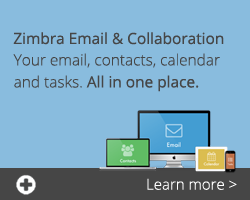
All internet users must understand the potential threats online. Your data is not always safe because of the Internet’s Dirty word, Malicious Software. Malicious Software (aka Malware) is designed to gain access to your computer without your knowledge to damage, steal data and your identity or gain access to your credit card and banking information. Malware comes in many different forms and is becoming more difficult to avoid.
In this blog post, we hope to increase education about what malicious software is, the different types of it and how you can protect yourself online.
What is Malicious Software?
Malware is short for malicious software, is software that is used to damage or retrieve information from computers in any form such as stealing data, bypassing access controls and interrupting computer functions.
Malware Objectives
In the past, Malware caused recognisable problems and was generally just a disruption. Increasingly however, serious organised crime and nation states are employing highly sophisticated Malware to silently compromise and gain control over your online activity. It is within the interests of the Malware creator for their software to remain undetected for as long as possible so at to be as effective as possible. Further, we are seeing widespread use of sophisticated ‘Ransomware’ – see below for more information.
Ultimately, the objective of the Malware distributors is financial gain or stealing your information (usually for financial gain also).
Different types of Malicious Software
Understanding the different types of malicious software and how they can attack will decrease the risk of damage to your data or device. Listed below are some of the most common forms:
Ransomware
Cryptolocker and it’s various clones, is able to scramble up (encrypt) all of your files so that it is impossible for you to read them – the only way for you to recover is to restore a backup or pay the ransom demand. Not only will they encrypt all of the files on your device, but also any other file the device has access to including your company network if you are connected. Of course paying the ransom is not guaranteed to result in the criminals sending you the keys to unlock your scrambled data and they may demand additional payments. Ransomware is a very serious problem and sometimes the only remedy (other than paying the ransom) is to restore a backup.
Spyware
Spyware will monitor your movements on the Internet, collecting private information and storing it on a centralised computer. The harm is that the spyware will likely send all of your keystrokes to the bad guys, including your bank login details, web pages you view, pictures etc. Modern spyware can even activate your camera and microphone to see and view what you are doing and record your conversations.
Trojan Horse (aka Trojan)
A trojan horse is designed to provide unauthorised access to users computers through a program that looks and feels legitimate. The program may seem to provide a real purpose but instead it provides a back door. Criminals control vast networks of computers and devices which are compromised with Trojans. Such a network of ‘drones’ allows the network operator to bring to bear this collective computing power for things such as Distributed Denial of Service attacks and password cracking, for example.
Virus / Worm
A virus infects your computer, taking control of some or all of the functions often damaging or destroying data or simply stealing information and sending it to the criminals’ computers. A worm is a self replicating virus which will automatically infect other computers. Worms can spread very quickly.
How does Malware find it’s way onto your computers and devices?
Nowadays, the most common method of infection is by some online activity – here are the most common:
Phishing
A Phishing scam usually involves an email sent to you apparently from a credible source such as your bank, a shopping website or a delivery organisation. The email may look incredibly realistic. There are usually two ways for a Phishing scam to affect you. 1) Encourage you to open an infected attachment – in the case of a delivery company, they might say ‘click the attached file to view details about your failed delivery’ – very tempting, especially if you receive a lot of deliveries. 2) Link you to a website which either has Malware which can automatically download and infect your computer or get you to provide your bank login details. Often this will be something along the lines of needing you to re-confirm your account details.
Email Infection
Very similar to a phishing scam, except the the email might come from a friend or business colleague you communicate with. It’s unlikely they sent it – rather it’s their email address being used to gain your confidence.
Website infection
Visiting a Malware infected website. Often the website may be perfectly legitimate and the criminals have surreptitiously modified the website to deliver the Malware without the owners knowledge. There are many ways a website can result in infection such as by automatically downloading Malware to your computer using JavaScript, compromising Flash player, Java or Silverlight or one of the many other media and browser plugins or by encouraging you to download legitimate software which is Malware infected.
Social Networks
Links, videos, social apps – are all potential methods of infecting your devices with Malware
Mobile Apps and Software you download from websites
Whilst the major app stores are working hard to remove Malware infected apps, it’s still possible to install third party apps. Downloading software from internet websites is also a common source of Malware.
MMS text messages
Less common, but Multimedia Messaging Service (MMS) messages are able to exploit security vulnerabilities in mobile device operating systems and infect them.
Instant Messaging
Links or documents sent via Instant Messaging, SMS or other text services can direct you to a malicious website or encourage you to open a Malware infected document.
Tips to Protect Yourself from Malware
Education and knowledge around preventing malware infections is the only way to protect your data. Here are a couple tips that we recommend you take action on:
- Keep your devices’ operating systems up to date.
- Be wary with downloading anything from the internet, including when interacting on social media.
- Never click on links in emails – rather, open your web browser and manually type out the website address.
- Verify the website SSL certificate to make sure it’s not a fake website.
- If you receive an attachment in an email, generally it’s best not to click on it. If the email is expected, appears to be from a trusted source and the words in the email are not out of place, carefully check the email address and ideally, read the actual email headers to make sure the email is actually from that person.
- Make sure you use an up to date browser such as Google Chrome or Firefox and enable the privacy features and Malware protection, for example: https://support.google.com/chrome/answer/99020?hl=en
- When downloading software, do so from trusted sources only. Always check the MD5 checksum if provided – this allows you to check that the file you’ve downloaded is the same as the one published on the website.
- For the truly paranoid, you can completely disable JavaScript in your browser which means that it becomes very difficult for malicious software to be automatically installed however, doing this will mean that most websites you visit will not function correctly.
- Install anti-malware software. Run a program that scans through all incoming and existing data, searching for viruses, spyware, adware, trojans and more.
No tactic is guaranteed – the key is to be continuously vigilant.
Thanks for reading!
Suggested Links:
- What is Managed WordPress Hosting?
- Preventing a WordPress Crisis
- How to Optimise your WordPress Website


